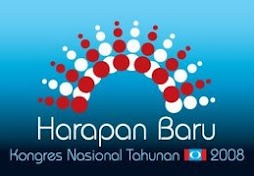Bkt Selambau: PKR to win by 1,500-2,000
Ong Kian Ming, 5 April 2009, Malaysiakini
If Bukit Gantang is the seen as the referendum seat for new Prime Minister Najib Abdul Razak, Bukit Selambau could be viewed as somewhat of a referendum seat for Anwar Ibrahim, at least on the part of the Indian voters there.
The fact that there are a record number of independent candidates in this by-election (13 in total) and the fact that none of them have dropped out of the race makes predicting the eventual margin of victory very challenging.
Given the difficulties in gauging the reaction of the Indian voters in this seat arising from their unhappiness over the candidate selected by Anwar, S Manikumar, it makes predicting the final margin of victory even more tricky.
My sense is that the votes which PKR will lose from disgruntled Indian voters will be somewhat compensated by the Malay votes it will gain by having the institutional support of the PAS state government in Kedah.
But the larger number of independent candidates and the votes that they will inevitably siphon off from both sides, probably slightly more from PKR than from BN, will mean that the margin of victory for Pakatan will decrease from 2,362 in 2008 to between 1,500 and 2,000 votes.
Net effect of 13 independents
The headlines for the Bukit Selambau seat have been dominated by the record number of independent candidates contesting in this seat. A total of 13 independent candidates – six Indians, six Malays and one Chinese candidate – are contesting in this seat.
Even if each independent candidate only manages to win 200 votes each, this adds up to 2,600 votes or approximately 10% of the total votes cast in the 2008 general election. The question of interest then is whether these independent candidates will take away more votes from BN or from PKR.
A good baseline assumption which one can make is that the Malay independent candidates will likely take away more votes from BN than from PKR and that the Indian independent candidates will likely take away more votes from PKR than from BN.
The Indian independent candidates will likely siphon away Indian voters who were not thinking of voting for BN but are too disgruntled or dissatisfied with the choice of the PKR candidate to vote for him.
The Malay independent candidates will likely siphon away Malay voters who are not willing to support an Indian BN candidate and who are also not willing to vote for an Indian PKR candidate but would prefer to vote for an independent Malay candidate who has former ties to Umno, their party of preference.
Among the Indian independent candidates, perhaps the most formidable and the one most likely to do some damage to PKR is A Jayagopal (above), former PKR Pokok Sena chairman and one of the Indian leaders ‘interviewed’ as a possible PKR candidate.
Among the Malay candidates, Major (Rtd) Anuar Abdul Hamid (right), a former Merbok division committee member of Umno and strong Dr Mahathir Mohamad supporter, is likely to do the most damage to BN.
I cannot with any reasonable degree of accuracy predict the net effect of these 13 independent candidates on the eventual margin of victory.
But I can say that the sense of disgruntlement by the Indian voters in this seat is probably greater than that felt by the Malay voters in this seat (given the long tradition that this seat is an MIC seat) and because of this, the independent candidates will probably take more votes away from the PKR than BN but that this number will be small – probably between 500 to 1,000 at most.
This is because the most disgruntled Indian voters may not show up to vote at all and those which are marginally disgruntled will ultimately choose to vote for the PKR candidate who will become the only Indian exco representative in the PAS-led state government.
Difficult to gauge ethnic-based voting
The lack of ‘saluran’ data and the fact that this seat featured a three-corner fight in 2004 means that I am only able to do an estimation of ethnic voting for the 2008 general election. In that election, I estimated Malay support for the BN to be approximately 63% while the non-Malay support for the BN was approximately 26%.
The relatively high level of BN support in 2008 is a reflection of the fact that the Malay PKR candidate was disqualified from running and that the eventual contest featured an Indian MIC candidate and an independent Indian candidate who later joined PKR after he won the seat.
Using saluran data from the salurans in Bukit Selambau but using returns from the Merbok parliamentary constituency (which Bukit Selambau is part of), I found that the number of votes won by the PKR Malay candidate in Merbok outpaced the number of votes won by the independent Indian candidate in Bukit Selambau by 1,973 votes, or 7.7% of total votes cast at the state level.
In other words, if voters in Bukit Selambau had voted in exactly the same manner which they did for the parliamentary seat of Merbok, independent candidate Arumugam would have won the state seat by 4,300 votes instead of his 2,362 vote majority.
If PKR can reduce the level of Malay support for BN by 5% to approximately 58%, which was the level of Malay support BN received at the parliamentary level in 2008, then it would be on its way to securing victory in this seat.
Decreasing the level of BN support to 58% is not unrealistic given that the Indian opposition candidate now has the institutional backing of PKR as well as the institutional backing of the PAS-led state government.
The Malay voters in this constituency also know that if they vote for the PKR candidate, they are also voting for an exco member in the state government, which should bring access to state resources and services for the voters in this seat.
The fact that the PKR candidate is not seen as coming from within the ranks of Hindraf means that he is probably more ‘acceptable’ to the Malays compared to if he was drawn from the ranks of Hindraf.
The BN can expect the level of support among non-Malay voters to increase slightly, perhaps from 26% in 2008, to 30% in 2009, not because it is winning more non-Malays to its side but because many Indian voters who voted for the opposition in 2008 may ‘boycott’ this by-election because they are dissatisfied with the choice of candidate on the part of PKR.
The fall in the level of support for PKR by the non-Malays is likely to be softened by the fact that Chinese support for the PKR has not been significantly affected by either the presence of independent candidates or by the candidate selection issue on the part of PKR as well as by the fact that the Indian voters in this constituency know that a repeat of the Arugumam situation, where an independent Indian candidate managed to win this seat in 2008, is very unlikely given that there is a PKR Indian candidate running in this contest.
In addition, Indian voters in Bukit Selambau are rational in that they know voting for the PKR candidate also means that they are voting in the sole Indian exco to the PAS-led state government.
Voters turnout crucial
Unlike Perak, there are no state-wide issues which are likely to be particular salient in this contest.
The issue of Najib becoming the new prime minister will likely be somewhat salient but the issue of disgruntlement at Anwar over the candidate selection process which then led to the emergence of a number of independent Indian candidates is probably as consequential as Najib’s premiership.
Pakatan is likely to use the issue of the killing of six Indians in Kulim by the police force and perhaps the death of A Kugan in police hands as key electoral issues to be exploited among the Indian voters in this seat.
The BN will most likely attack the character of the previous state representative, Arumugam, who had to resign because of allegations of improper personal behaviour and perhaps link this to the behaviour of Pakatan’s de facto leader, Anwar Ibrahim.
The usual promises and distribution of goodies by the federal government has already started although this time, Pakatan can counter with support from the PAS-led state government.
As in any by-election, the turnout battle is going to be important in determining the final margin of victory.
An analysis of the voting trends by the average age of the saluran, using the 2008 general elections data, once again shows that the level of BN support is the highest among the salurans with an average age greater than 55 years.
A higher turnout rate among those below the age of 55 and who are working and living outside the constituency would help Pakatan, while a lower turnout rate among this key group of voters will help BN.
Like Bukit Gantang, the relative accessibility of Bukit Selambau to the population centres in Penang and perhaps Perak where some of these outstation voters may work and reside would help increase turnout but the fact that polling day falls on a Tuesday will have the opposite effect.
My assumption is that the turnout rate for this by-election will not change much from the 73.7% in the 2008 general election.
Will Anwar’s gamble work?
Assuming a similar turnout rate, assuming that the level of BN support among the Malay voters fall to 58% and assuming that the level of BN support among the non-Malays increases slightly to 30%, I estimate a 2,500 vote majority for Pakatan.
But I also said that the net effect of the 13 independent candidates will decrease Pakatan’s majority by somewhere between 500 to 1,000 votes. Given this, I arrive at a final estimate of a Pakatan win by between 1,500 to 2,000 votes.
A larger majority for Pakatan means that Anwar’s gamble to field a political newbie that antagonised the Hindraf supporters but may be seen as more acceptable by the Malay voters in Bukit Selambau has paid off.
A smaller majority for Pakatan means that the Indian voters have sent a strong signal to Anwar that the organisational and symbolic strength of Hindraf cannot be taken lightly.
ONG KIAN MING is a PhD Candidate in political science at Duke University. He can be reached at im.ok.man@gmail.com.
Sunday, April 5, 2009
Subscribe to:
Post Comments (Atom)























No comments:
Post a Comment